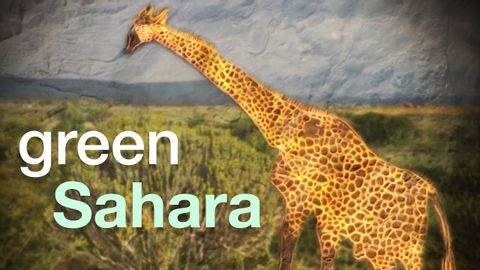撒哈拉的岩畫藝術(Rock Art in the Green Sahara)
Nai Ching Hsiao 發佈於 2021 年 03 月 06 日  沒有此條件下的單字
沒有此條件下的單字US /ˈpɪriəd/
・
UK /ˈpɪəriəd/
- n. (c./u.)時期;(用於句末;表示斷定的口氣)就這樣;句號;月經;期間
US /ˌrɛprɪˈzɛnt/
・
UK /ˌreprɪ'zent/
- v.t.具象派的;象徵;表示;代表(政府機關);當...代表
US /ˈklaɪmɪt/
・
UK /ˈklaɪmət/
- adv.粗略地;粗暴地;草率地;粗魯地;大致地;近似地;粗略地

